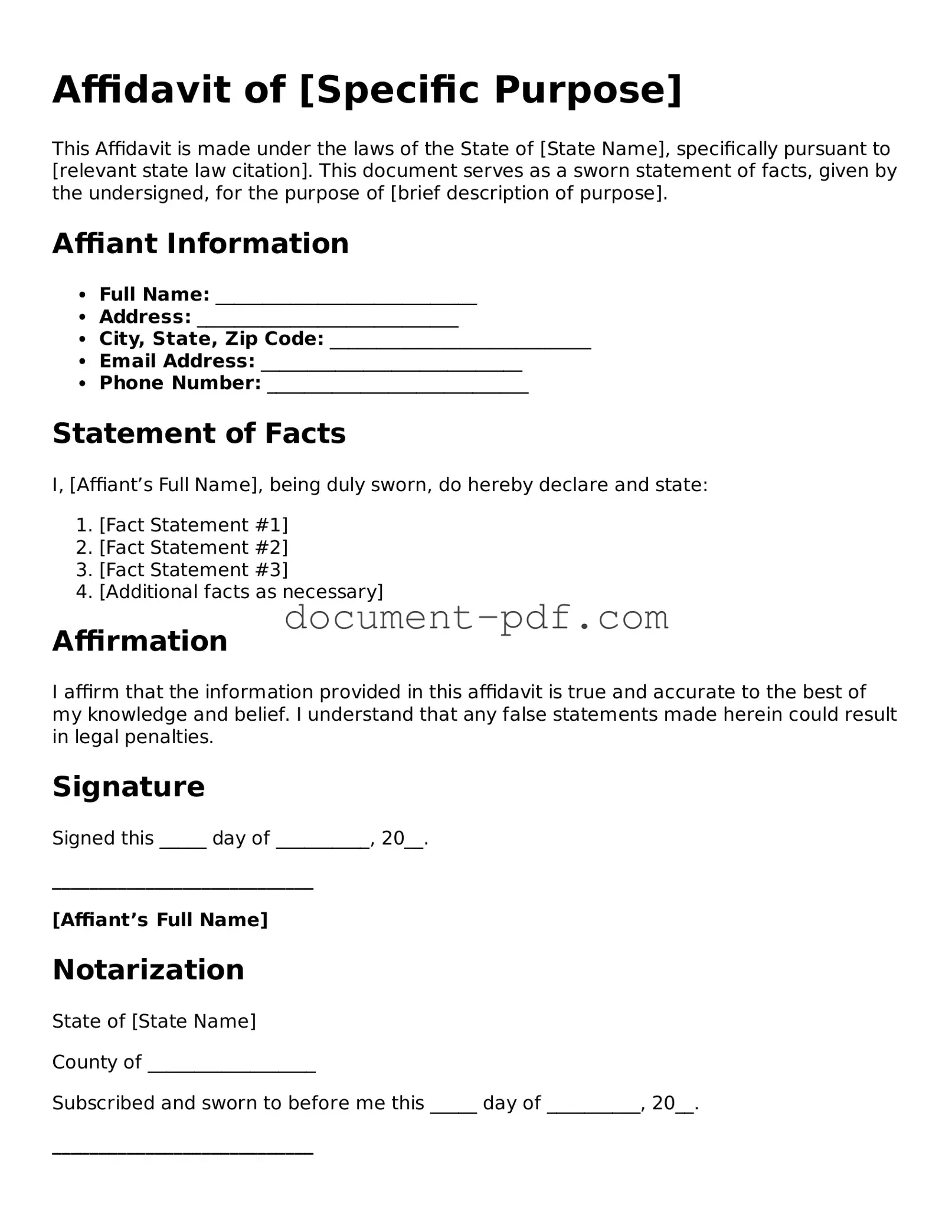Affidavit of [Specific Purpose]
This Affidavit is made under the laws of the State of [State Name], specifically pursuant to [relevant state law citation]. This document serves as a sworn statement of facts, given by the undersigned, for the purpose of [brief description of purpose].
Affiant Information
- Full Name: ____________________________
- Address: ____________________________
- City, State, Zip Code: ____________________________
- Email Address: ____________________________
- Phone Number: ____________________________
Statement of Facts
I, [Affiant’s Full Name], being duly sworn, do hereby declare and state:
- [Fact Statement #1]
- [Fact Statement #2]
- [Fact Statement #3]
- [Additional facts as necessary]
Affirmation
I affirm that the information provided in this affidavit is true and accurate to the best of my knowledge and belief. I understand that any false statements made herein could result in legal penalties.
Signature
Signed this _____ day of __________, 20__.
____________________________
[Affiant’s Full Name]
Notarization
State of [State Name]
County of __________________
Subscribed and sworn to before me this _____ day of __________, 20__.
____________________________
Notary Public
My commission expires: _____________
